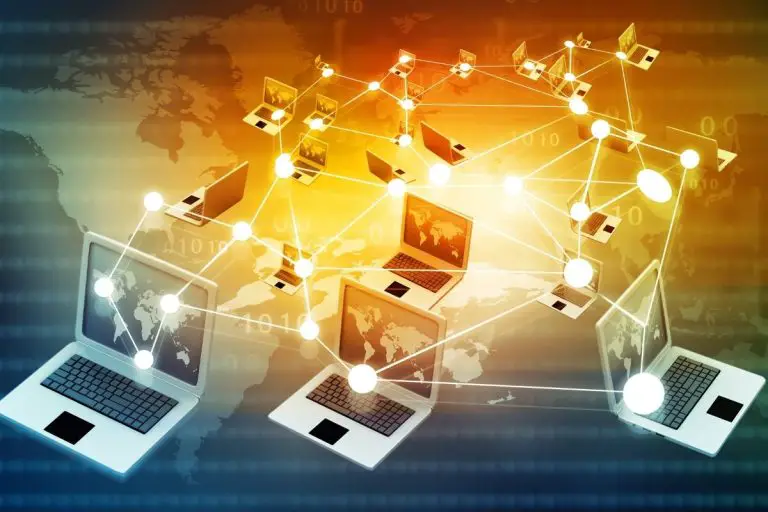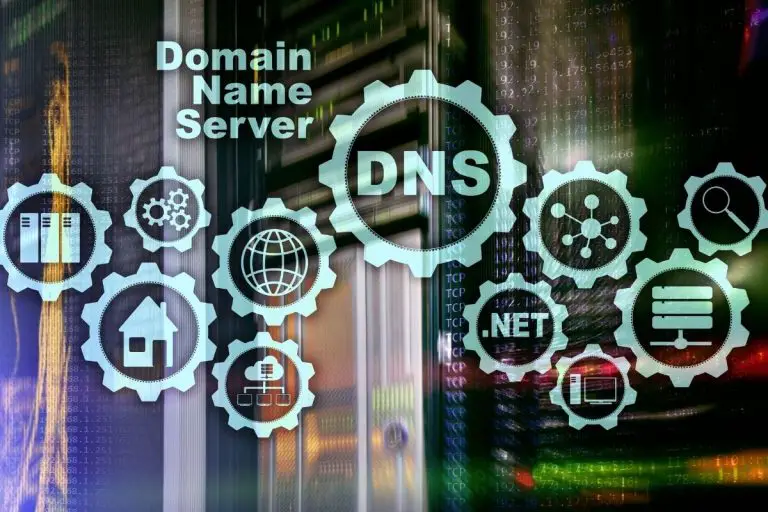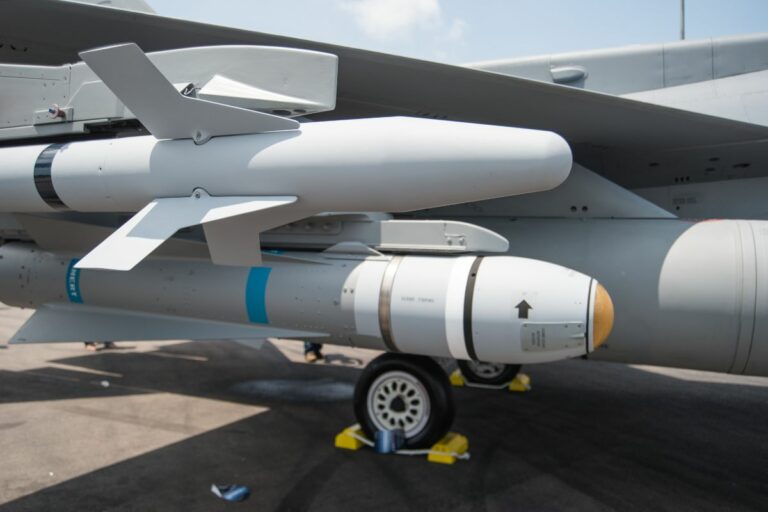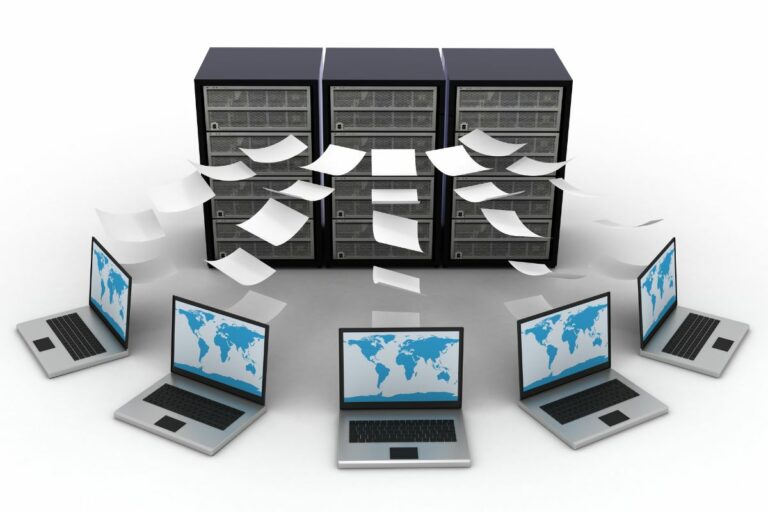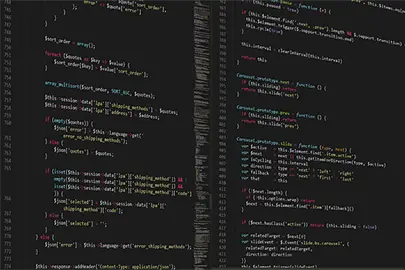What’s the Difference between Internet and Ethernet?
As a network administrator, I often hear this mistake when using Internet or Ethernet in the wrong case. But they are two entirely different words, nothing sharing, except the sonority. Here is the best way to explain to you the real difference between these two notions:
The main difference between Internet and Ethernet is that Internet relates to a wide area network (WAN) while Ethernet is a technology used on local network (LAN). The Internet connects most of the computers in the world, while Ethernet is used to connect computers together on a small network.
Let’s see now with more details, the definition of both technologies, and other word like Intranet or Extranet that you may also confuse with them.
Internet
Definition
The large system of connected computers around the world that allows people to share information and communicate with each other
The Cambridge Dictionary
The main lesson to remember here is that it’s a worldwide network.
Thanks to this network you can browse on your favorites websites, even if they are hosted at the other end of the world.
Here is a map of the main Internet cables in the world:

It’s only the submarine cables, and then in each country you have a network between regions, cities and districts (source: SubmarineCableMap).
History
As you may imagine, the worldwide network doesn’t appear one day, entirely connected with each country.
Internet comes from a long processes from discoveries and challenges.
I will not give you too much detail here, you can find entire books on the topic (this one or maybe this one are greats if you are interested, both available on Amazon).
But here are the keys dates to know, so you can have a basic idea of the history and steps:
- 1958: The first modem is invented
- 1969: Creation of the first network between four US universities
- 1971: The first email sent on the ARPANET network (ancestor of the Internet network)
- 1973: Several European countries start to join the ARPANET network
- 1983: Revolution for networks, the TCP/IP protocol is born
- 1990: The World Wide Web is live (the Internet we now use every day)
- 2000: More than 400 million computers are connected to the Internet
So, it takes 30 years of technology progress to create the Internet network
But its adoption by the public was faster.
In ten years, from 1990 to 2000, the network grows from 100000 computers to 400 millions.
Today
Today, the number of people connected to the Internet continues to grow
The 4 billions mark has been surpassed in 2018, to reach 50% of the world’s population.
In developed countries, the percentage of people connected to the Internet is between 80 and 90% on average.
Today the Internet has become a gigantic monster.
It’s estimated, for example, that there are more than 2 billion active websites.
Larger sites like Google or Microsoft alone have more than 1 million servers to host their services.
Ethernet
Definition
A system for connecting computers into networks
Cambridge Dictionary
To go further, Ethernet is a standard and a technology, allowing computers to communicate between them on a local network.
So, it’s a main difference to remember versus Internet.
Usage
Nowadays, the Ethernet name is often used to name the hardware.
You can for example talk about Ethernet socket or Ethernet cable to name an RJ45 cable (see more details here).
I think that’s why so many people confuse about Internet and Ethernet.
You use an Ethernet cable to connect to the Internet, but it doesn’t become an Internet cable. 🙂
OSI model
For the network experts here, and also to fix this language issue, you have to know that all networks are built within the OSI model, with seven layers:
- Application: your web browser
- Presentation: languages like HTML or XML
- Session: protocols like HTTP and HTTPS
- Transport: TCP
- Network: IP
- Data link: Ethernet
- Physical: RJ45
So, Ethernet is on the data link layer and RJ45 on the physical layer.
The physical layer is all about the support we used to communicate (cable, switch).
And the data link layer is the first level allowing connecting computers between each other.
So, you know exactly where comes the difference, it’s not big but there is one.
If you want to learn more about the model OSI, you can find many tutorials, like this one on Medium or this page on Wikipedia
In a nutshell
| Internet | Ethernet |
|---|---|
| Worldwide network, linking all the servers and computers over the world | Local technology, mainly use to connect computer to a local network |
| Refers to the WAN network | Exist on the local network (LAN) |
| Example: Website | Example: RJ45 cable |
Similar terms
Before finishing this post, I want to explain two other bonus terms you may confuse with, in the same sonority.
For example, do you know the difference between “Intranet” and “Extranet”? 🙂
Intranet
An Intranet is like Internet inside a company, an internal network.
It could be a specific network for employees, or a group of servers they can use (web, email, etc.).
But we generally talk about an Intranet to speak about the website of the company, that only employees can read.
Extranet
Extranet is the opposite.
An extranet is the network a company shares with their partners.
Depending on the company needs, it can be another website that partners can consult, a file share or any other resources.
Conclusion
You now know the difference between Internet and Ethernet.
To sum up:
- Internet is a worldwide network, allowing people to exchange messages, files and data all over the world, including browsing websites
- Ethernet is a local network technology, to connect computers inside a private network, at home or in a company. We often use Ethernet to name the hardware we used to connect these computers (a cable for example)
I also explained similar terms like Intranet and Extranet.
I hope you get all the answers you need in this post.



